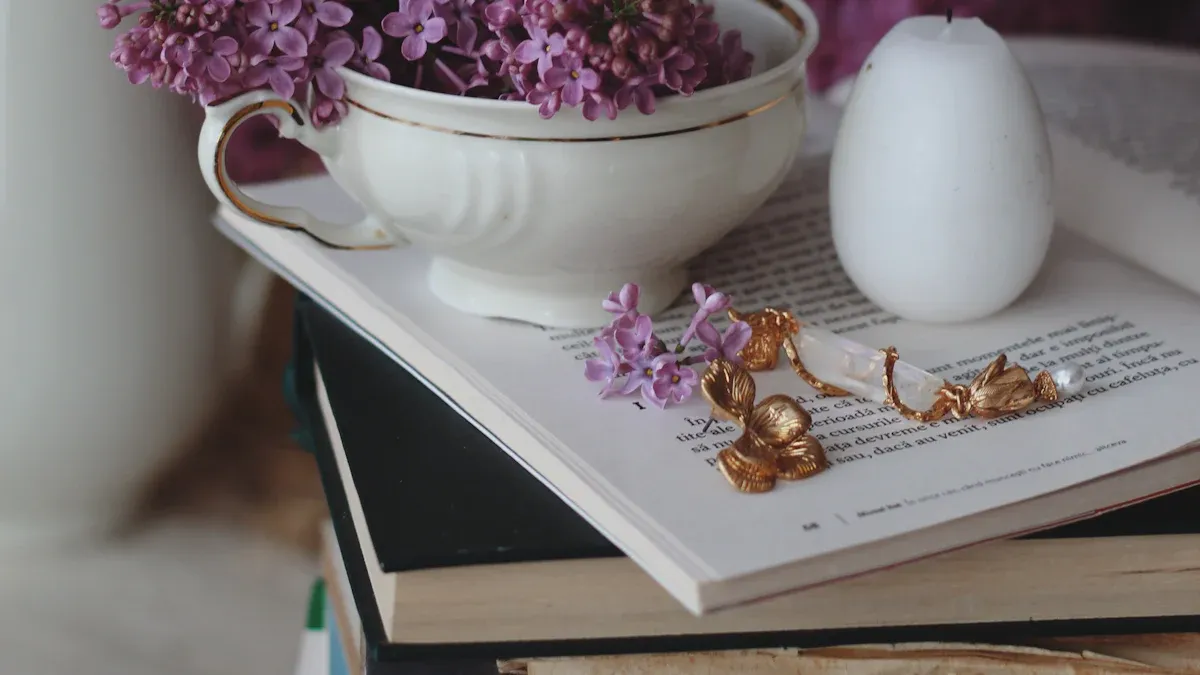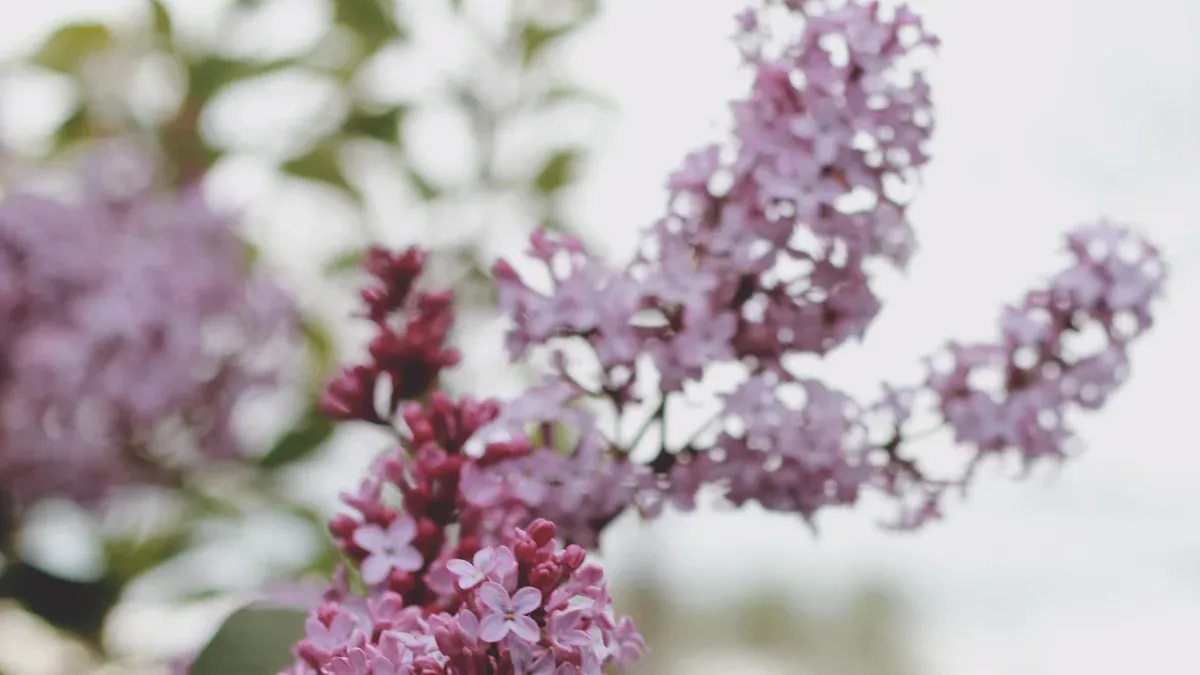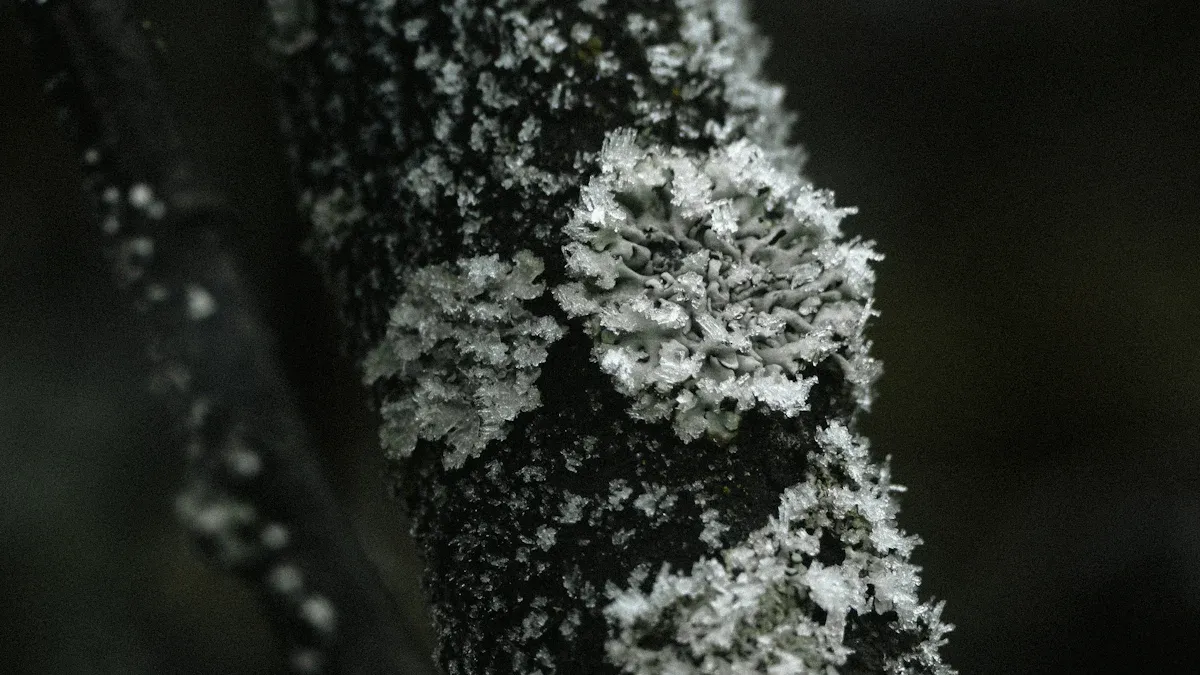
If your lilac plant is drooping, it could signal several issues needing your attention. Lilac plant drooping often occurs due to environmental stress, pests, or diseases. Recognizing these underlying causes is essential for restoring your plant’s health. Addressing factors like soil compaction and water availability can make a big difference in keeping your lilac thriving.
Key Takeaways
Monitor environmental conditions like temperature and humidity to prevent drooping in lilacs.
Check soil health regularly; ensure it is well-drained and slightly alkaline to support lilac growth.
Stay vigilant for pests and diseases; early detection can save your lilac from significant damage.
Causes of Lilac Plant Drooping

Environmental Stress
Environmental stress can significantly impact your lilac plant’s health. Factors like water availability, temperature extremes, and sudden changes in humidity can lead to drooping. Here are some common stress factors that you should watch out for:
Stress Factor | Description |
|---|---|
Water Stress | Results in drooping leaves, dry soil, and browning edges due to inadequate or excessive watering. |
Heat Stress | Causes wilting during hot weather and curling leaves, often due to extreme temperatures. |
Environmental Stress | Leads to general decline in vigor, leaf drop, and wilting due to rapid changes in temperature or humidity. |
To help your lilac thrive, monitor the weather and adjust your care routine accordingly. If you notice prolonged periods of heat, ensure your lilac gets enough water. On the flip side, avoid overwatering, which can also lead to drooping.
Tip: If you see brown, crispy edges on your lilac’s leaves, it might be a sign of prolonged sunlight exposure. This can cause wilting and weaken the plant over time.
Soil Conditions
Soil conditions play a crucial role in the health of your lilac. If the soil is compacted or poorly drained, it can lead to drooping. Here are some key points to consider:
Lilacs prefer slightly alkaline soil with a pH level between 7 and 8. This range helps prevent drooping and promotes healthy growth.
Compacted soil can restrict root growth and water absorption. If you notice yellowing leaves or wilting, it might be time to aerate the soil.
Overwatering can lead to squishy roots and drooping. If your lilac sits in waterlogged soil, it can suffer from root rot.
To improve soil conditions, consider amending heavy clay with organic matter. This can enhance drainage and prevent drooping. Remember, lilacs don’t like sitting in waterlogged soil!
Note: If you experience heavy rainfall, check your lilac’s drainage. Poor drainage can lead to overwatering, which is detrimental to your plant’s health.
By keeping an eye on environmental stressors and ensuring your soil is in good condition, you can help your lilac plant thrive and avoid drooping.
Pests Affecting Lilacs

Identifying Common Pests
Pests can be a real headache for your lilac plants. They often cause drooping and other signs of distress. Here are some common pests you might encounter:
Aphids: These tiny insects suck the sap from lilac leaves, leading to curling and drooping.
Caterpillars: They munch on leaves, creating holes that can stunt growth and cause wilting.
Mealybugs: These pests appear as white, cottony masses on stems and leaves, draining your plant’s energy.
Whiteflies: These small, white insects can cause yellowing leaves and drooping due to their feeding habits.
Weevils: These beetles can damage roots and leaves, leading to overall plant decline.
To keep your lilacs healthy, regularly check for these pests. Look for signs like holes in leaves or sticky residue on the plant.
Treatment Options
Once you identify the pests, it’s time to take action. Here are some effective treatment options:
For Aphids:
Knock them off with a strong stream of water. This natural method can dislodge them without chemicals.
If the infestation is severe, consider using neem oil or insecticidal soap.
For Caterpillars:
Handpick them off your lilac. This method is effective and keeps your plant chemical-free.
You can also apply horticultural oil to eliminate them.
For Mealybugs:
Manually remove them using a cotton swab dipped in alcohol. This method is simple and effective.
If the problem persists, use insecticidal soap or systemic treatments.
For Whiteflies:
Yellow sticky traps can help catch these pests. They attract whiteflies and reduce their numbers.
Insecticidal soap can also be effective against whiteflies.
For Weevils:
Introduce beneficial nematodes to your soil. They target weevil larvae and help control the population.
If necessary, apply soil drench insecticides for more severe infestations.
Tip: Regularly monitor your lilacs for any signs of pests. Early detection can save your plants from significant damage.
By staying vigilant and using these treatment options, you can help your lilac plants recover from pest infestations and prevent drooping.
Diseases Causing Drooping
Bacterial Blight
Bacterial blight is a serious issue for lilacs. You might notice early symptoms like small, water-soaked spots on the leaves. These spots can grow larger and turn brown, especially during wet conditions. Young shoots are particularly vulnerable. They may wilt and blacken, leading to a drooping effect. This drooping often appears as a condition known as “Shepard’s crook,” where the shoots become girdled and bend downwards.
To prevent bacterial blight, you should focus on keeping your lilac healthy. Here are some tips:
Avoid overhead watering: Watering from above can create a humid environment that encourages bacterial growth.
Prune regularly: Remove any dead or damaged branches to improve air circulation.
Dispose of fallen leaves: Rake up and throw away any leaves that fall to the ground. Don’t compost them, as this can spread the bacteria.
If you find that your lilac is infected, act quickly. You can treat bacterial blight by applying a copper-based fungicide. Make sure to follow the instructions on the label for the best results.
Fungal Infections
Fungal infections can also lead to lilac plant drooping. One common culprit is lilac leaf spot, caused by fungi like Pseudocercospora or Septoria. This disease leads to yellowing leaves, brown spots, and early leaf drop. If left untreated, these symptoms can contribute to the drooping appearance of your lilac.
To manage fungal infections, consider these prevention and treatment methods:
Keep your lilac healthy: Proper fertilization, watering, and sunlight are essential.
Prune dead branches: Regularly trim away any dead or damaged parts of the plant.
Improve air circulation: Trim back surrounding plants to allow better airflow around your lilac.
Apply fungicides: Use fungicides in early spring to control leaf spot. If fungal issues persist, regular applications throughout the season may be necessary.
Additionally, avoid watering in the evening. This practice can reduce fungal issues by allowing the foliage to dry out before nightfall.
By staying vigilant and taking these steps, you can help prevent diseases from causing your lilac plant to droop.
Nutrient Deficiencies in Lilacs
Importance of Fertilization
Fertilization plays a vital role in keeping your lilac plants healthy and vibrant. When you use a balanced fertilizer, like a 10-10-10 mix, you promote overall health and blooming. Here’s why fertilization matters:
It provides essential nutrients that support growth.
Phosphorus is crucial for flowering, while too much nitrogen can lead to poor blooms.
Regular fertilization in early spring enhances growth and resilience against diseases.
By fertilizing your lilacs properly, you help them thrive and reduce the chances of drooping.
Signs of Nutrient Deficiency
Recognizing nutrient deficiencies early can save your lilac from serious issues. Here are some common signs to watch for:
Nutrient Deficiency | Symptoms | Cause |
|---|---|---|
Magnesium | Yellowing between leaf veins, browning of older leaves | Shortage of magnesium in soil, especially in sandy soils |
Potassium | Poor flowering, stunted growth | Overuse of potassium-rich fertilizers |
Phosphorus | Poor flowering, stunted growth | General nutrient deficiency in soil |
You might also notice specific visual signs on the leaves:
Visual Sign | Nutrient Deficiency |
|---|---|
Yellowing leaves | Nitrogen Deficiency |
Yellowing between veins | Iron Chlorosis |
Purplish leaf undersides | Phosphorus Deficiency |
If you see these symptoms, consider conducting a soil test. This test can help you identify specific nutrient issues and guide your fertilization efforts. Remember, keeping your lilacs well-fed is key to preventing drooping and ensuring they flourish.
Weather Impact on Lilacs
Effects of Extreme Heat
Extreme heat can take a toll on your lilac plants. When temperatures soar, you might notice your lilacs wilting and drooping. This reaction shows that the plant struggles to maintain hydration and normal function under stress. Here are some signs of heat stress in lilacs:
Leaves may curl inward or become crispy.
Wilting and drooping are common responses to excessive heat.
The plant’s normal physiological functions can become overwhelmed.
To protect your lilacs during heat waves, consider these tips:
Provide temporary shade using shade cloth or landscape burlap to shield them from direct sunlight.
Apply a thick layer of mulch (about 3 inches) around the plants to keep the soil cooler and retain moisture.
Water in the morning to allow lilacs to absorb moisture before peak heat.
Use drip irrigation or soaker hoses to deliver water directly to the roots.
Managing Soil Moisture
Soil moisture plays a crucial role in your lilac’s health. Fluctuations can lead to droopy leaves, indicating stress. Both overwatering and underwatering can harm your lilacs. Regular soil checks and deep watering are essential for maintaining healthy plants. Here are some effective techniques:
Technique | Description |
|---|---|
Organic Mulch | Applying a 3- to 4-inch layer around the base helps conserve moisture and regulate soil temperature. |
Targeted Watering | Direct water at the base of the plant to minimize disease risk from wet foliage. |
Deep Watering | Water deeply every 2 weeks during dry spells to encourage deep root growth. |
Adjusting for Weather | Monitor soil moisture and adjust watering frequency based on rainfall and temperature conditions. |
By following these practices, you can help your lilacs thrive, even in challenging weather conditions.
Taking care of your lilac plants is essential to prevent drooping. Remember to monitor environmental conditions, check for pests, and ensure proper soil health. Here are some key takeaways:
Choose a clean vessel for watering.
Cut stems in the morning or evening to reduce shock.
Ensure your lilacs get at least six hours of sunlight daily.
By following these tips, you can help your lilac plants thrive and enjoy their beauty for years to come!
FAQ
What should I do if my lilac leaves are turning yellow?
Yellow leaves often indicate nutrient deficiencies or overwatering. Check your soil moisture and consider fertilizing with a balanced mix.
How often should I water my lilac plant?
Water your lilac deeply every 1-2 weeks, depending on rainfall. Ensure the soil dries out between waterings to prevent root rot.
Can I prune my lilac to prevent drooping?
Yes! Pruning helps improve air circulation and removes dead branches. Do this in late winter or early spring for best results.
